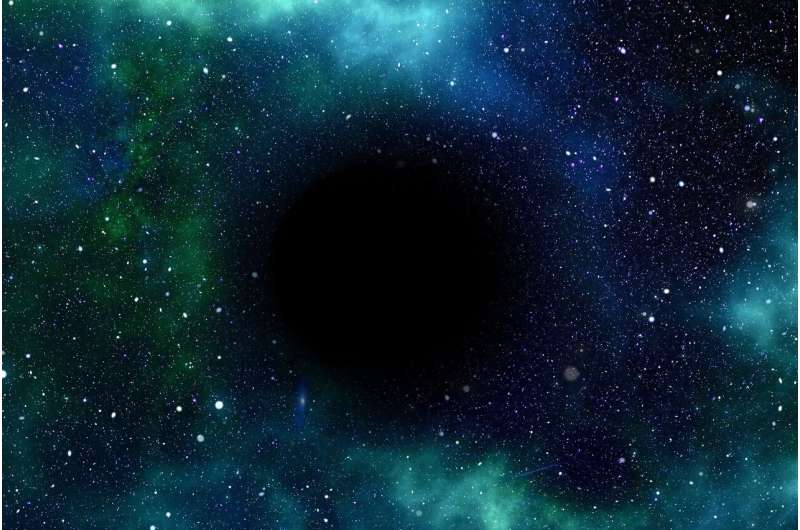
August 28, 2024 by SUNY Polytechnic Institute
Collected at: https://phys.org/news/2024-08-nuanced-black-hole-thermodynamics.html
A paper titled “Universality of the thermodynamics of a quantum-mechanically radiating black hole departing from thermality,” published in Physics Letters B highlights the importance of considering black holes as dynamical systems, where variations in their geometry during radiation emissions are critical to accurately describing their thermodynamic behavior.
The study also suggests that extremely compact objects (ECOs) share these thermodynamic properties with black holes, regardless of their event horizon status. The significance of this research lies in its contribution to the ongoing efforts to resolve the black hole information paradox, providing a more nuanced understanding of black hole thermodynamics in quantum gravity contexts.
The research, conducted by Dr. Christian Corda, SUNY Poly Visiting Professor in the Department of Mathematics & Physics, and Dr. Carlo Cafaro (SUNY Poly Adjunct Professor in the Department of Mathematics & Physics and Associate Professor in the Department of Nanoscale Science & Engineering at the University at Albany), exploits elements of quantum physics, statistical mechanics, and general relativity.
One of the most important problems in contemporary theoretical physics is understanding what a black hole (BH) is. It is believed that classical general relativity implies that a BH is an object with a horizon, i.e. a limit surface beyond which no event can influence an external observer, and a singularity in its core, i.e. a point at which the presence of infinite implies that the laws of physics fail.
On the other hand, recent approaches, both classical and quantum, have shown that what we call BH could be an object without both horizons and singularities. Objects of this type are also called Extremely Compact Object (ECO), to distinguish them from the “traditional” concept of BH.
If, on the one hand, this approach solves some important problems, such as the removal of the singularity and the consequent restoration of physical laws, on the other it creates another: What do we do with all the BH thermodynamics, developed over the last 50 years and more years, starting from the pioneering and famous works of the late Bekenstein and Hawking, and based on an enormous number of research papers?
In 2023, Samir Mathur and Madhur Mehta gave an important answer to this question by winning the third prize in the Gravity Research Foundation Essay Competition for proving the universality of BH thermodynamics.
Specifically, they demonstrated that any ECO must have the same BH thermodynamic properties regardless of whether the ECO possesses an event horizon.
The result is remarkable, but it was obtained under the approximation according to which the BH emission spectrum has an exact thermal character. In fact, strong arguments based on energy conservation and BH back reaction imply that the spectrum of the Hawking radiation cannot be exactly thermal.
In their work, Drs. Corda and Cafaro extended the result of Mathur and Mehta to the case where the radiation spectrum is not exactly thermal using the concept of BH dynamical state.
The BH dynamic state is obtained by introducing an effective temperature. This is in analogy to several other fields of Science where the deviation from the thermal spectrum of the emitting body is usually considered via the introduction of an effective temperature which represents the temperature of a black body emitting the same exact amount of radiation as the non-thermal source.
In the BH case, the introduction of the effective temperature allows the introduction of other effective quantities, which characterize its “dynamic state,” i.e. the BH state “during” the quantum transition in which energy is emitted or absorbed. This paper therefore generalizes and completes the work of Mathur and Mehta.
More information: Christian Corda et al, Universality of the thermodynamics of a quantum-mechanically radiating black hole departing from thermality, Physics Letters B (2024). DOI: 10.1016/j.physletb.2024.138948
Journal information: Physics Letters B

Leave a Reply